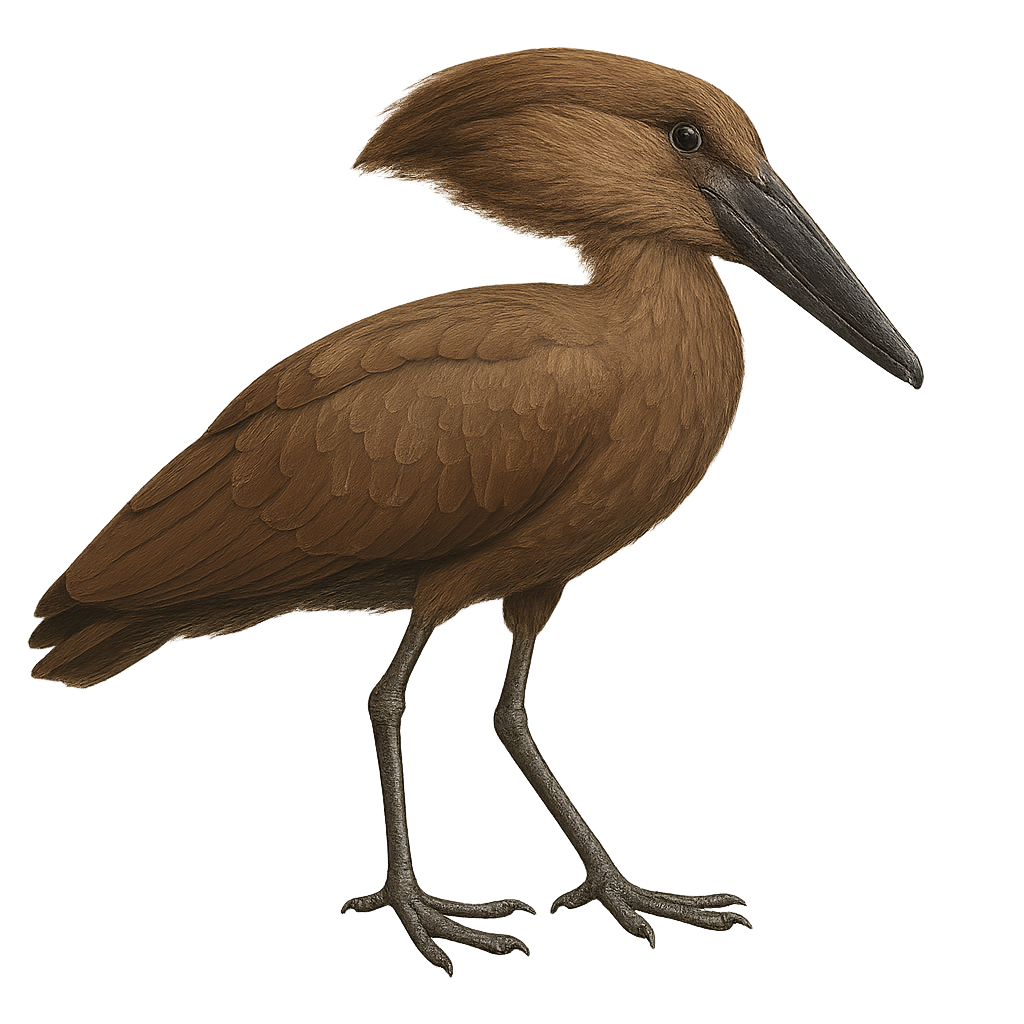Your wildlife photography guide.
Explore the hamerkop in detail, study its behavior, prepare your shots.
Where to observe and photograph the hamerkop in the wild
Learn where and when to spot the hamerkop in the wild, how to identify the species based on distinctive features, and what natural environments it inhabits. The WildlifePhotographer app offers tailored photography tips that reflect the hamerkop’s behavior, helping you capture better wildlife images. Explore the full species profile for key information including description, habitat, active periods, and approach techniques.
Hamerkop
Scientific name: Scopus umbretta

IUCN Status: Least Concern
Family: SCOPIDAE
Group: Birds
Sensitivity to human approach: Suspicious
Minimum approach distance: 10 m
Courtship display: August to November
Incubation: 27-30 jours
Hatchings: August to December
Habitat:
Wetlands, marshes, rivers
Activity period :
Primarily active during the day, with peak activity in the morning and late afternoon.
Identification and description:
The Hamerkop, or Scopus umbretta, is a unique and fascinating bird, recognizable by its distinctive hammer-shaped head. It measures about 50 cm in length and has a uniform brown plumage. This bird is often seen near water bodies in sub-Saharan Africa, where it builds massive nests weighing up to 50 kg. The Hamerkop is a gregarious bird, often seen in small groups, and feeds primarily on fish, amphibians, and aquatic insects. It is known for its elaborate courtship behavior, which includes dances and twig offerings. Although its conservation status is currently "least concern," habitat degradation could pose future threats.
Recommended lens:
400 mm – adjust based on distance, desired framing (portrait or habitat), and approach conditions.
Photography tips:
To photograph the Hamerkop, it is advisable to use a telephoto lens of at least 400mm to capture detailed images without disturbing the bird. Approach slowly and discreetly, maintaining a distance of at least 10 meters to avoid startling it. The best photo opportunities often occur near water bodies, where the Hamerkop is active during the day. Try to capture its unique behavior, such as nest building or courtship displays. Take advantage of natural morning or afternoon light for well-lit shots.
The WildlifePhotographer App is coming soon!
Be the first to explore the best nature spots, track rutting seasons, log your observations, and observe more wildlife.
Already 1 432 wildlife lovers subscribed worldwide

